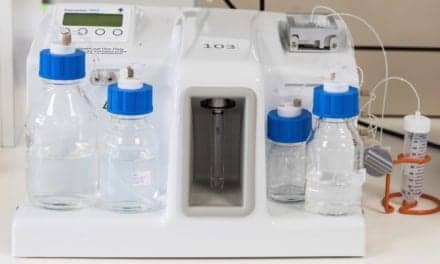Researchers have found changes in the levels of particular proteins in people’s blood up to two years before they were diagnosed with breast cancer.
The study, presented at the European Breast Cancer Conference, could form the basis of blood testing for people with a genetic predisposition or a family history of breast cancer to ensure the disease is diagnosed early when the chances of survival are greatest.
The findings, presented by Sophie Hagenaars from Leiden University Medical Center in The Netherlands, are from the Trial Early Serum Test Breast cancer (TESTBREAST) study.
TESTBREAST Study
The TESTBREAST study was initiated in 2011 by Professor Rob Tollenaar and Wilma Mesker, PhD, and currently includes 1,174 women who are at a high risk of breast cancer, due to their family history or because they carry gene variants that are known to raise their cancer risk. The women are being cared for at nine hospitals across The Netherlands where they are offered breast screening at a younger age and more regularly than the rest of the Dutch population who have an average risk of breast cancer.
The study has been running for ten years and the women taking part have been giving blood samples at least once a year when they go for screening. Any who develop breast cancer also give samples at the time of diagnosis.
Researchers used a well-established technique called mass spectrometry to analyze the levels of different proteins in the women’s blood. They looked both for variation between different women and changes that emerge in individual women over time.
So far, the researchers have made detailed analyses of 30 blood samples taken over time from three women who have been diagnosed with breast cancer and three women who have not developed breast cancer and found distinct differences between the women over time. This has revealed a set of six proteins that were at higher or lower levels one to two years prior to diagnosis.
“These proteins could form the basis for a blood test for early detection of breast cancer in women at a higher risk,” says Hagenaars. “It’s important to note that we found more variation in the protein levels in the blood samples between women, compared to over time within the same woman who developed breast cancer. This shows that testing should probably be based both on proteins that differ between women with and without breast cancer and on proteins that alter in an individual person over time.”
The researchers will validate their findings in a larger group of women with and without breast cancer taking part in the TESTBREAST study and in women taking part in other high-risk breast cancer research studies.
“If further research validates our findings, this testing could be used as an add-on to existing screening techniques,” Hagenaars added. “Blood tests are relatively simple and not particularly painful for most people, so people could be offered screening as often as needed.”
Laura Biganzoli, MD, is co-chair of the European Breast Cancer Conference and Director of the Breast Centre at Santo Stefano Hospital, Prato, Italy, and was not involved in the research.
“Women at a high risk of developing breast cancer take part in screening programmes at fixed time-points,” she says. “If this research ultimately results in a blood test for people with a high risk of breast cancer, that could guide personalised screening and help to diagnose breast cancer at the earliest possible stage.”





